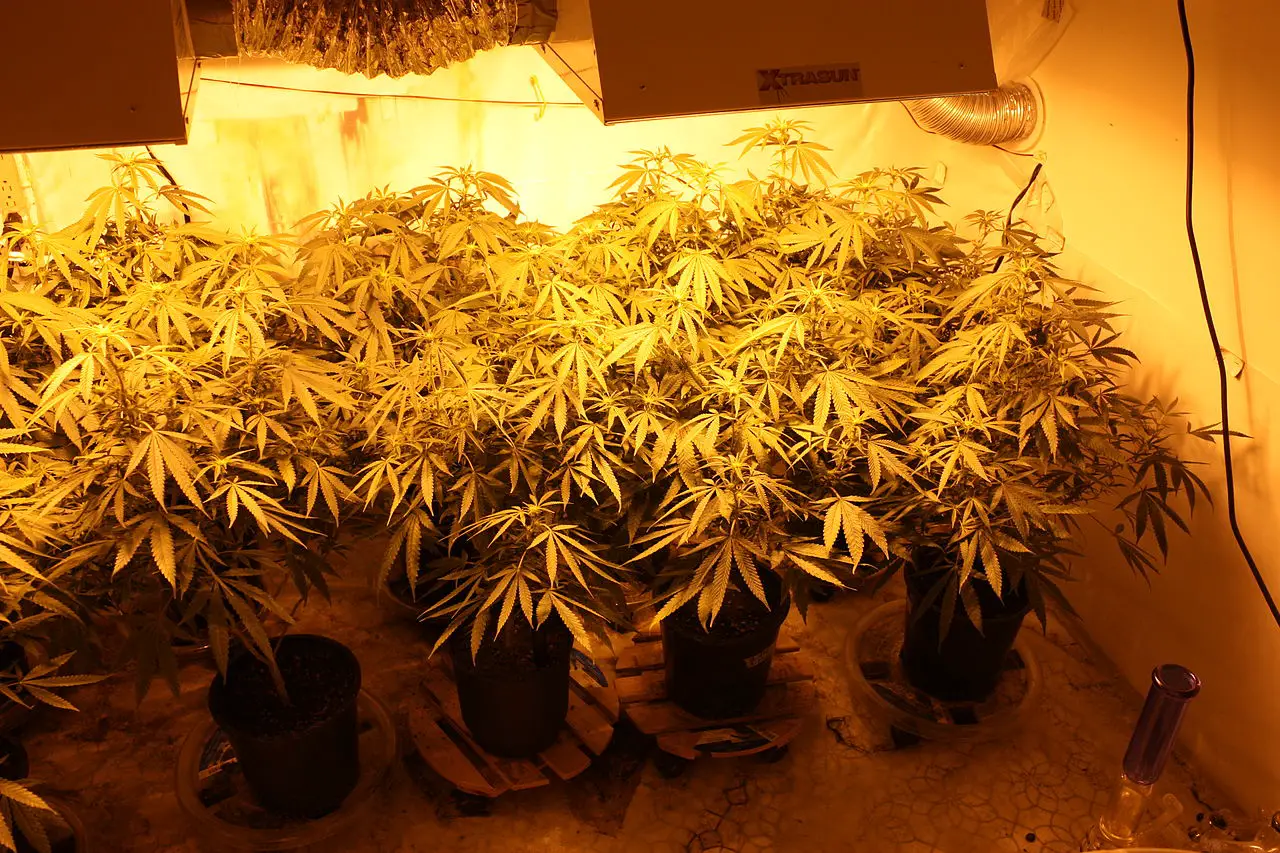Low stress training, also known as the LST, is a method of manipulating your plant’s size and shape for better yield. It involves bending your plants so that they spread horizontally. It discourages the vertical growth of your plants as it leaves most of the cola-bearing nodes shaded.
Unlike high-stress training that leaves the plant with a lot of healing to do, the low-stress training technique doesn’t hurt your plants. When you do the LST well, it channels the growth efforts to the sides, leading giving you a short, bushy growth that opens up for more bud sites.
Low stress training is particularly necessary for cannabis plants because cannabis plants channel their growth to the top. If left unattended, the smaller buds will not mature because of inadequate lighting.
Low stress training is also beginner-friendly. You don’t need a ton of experience to perform low-stress training. It is less invasive, and even when you make the beginner mistakes, your plant can still exhibit a healthy growth and sizeable buds. It also doesn’t require advanced tools; with plant ties, a pair of scissors, and little creativity, you can perform a successful low stress training.
Table of Contents
When to start low stress training cannabis plants?
Though LST mostly practiced by indoor growers, it is an effective high-yielding technique that also works for outdoor growers. Outdoor growers in colder, low-sunshine areas can increase their yield by tying their plants down for a flatter, widespread canopy.
You can start low stress training after the plant has grown 4-6 nodes or pair of leaves. At this stage, low stress training will be more successful because the stem is still pliable and can be easily bent.
If you delay LST, the stem will be too rigid to bend— and if you force it, it might break or bruise the plant. I delve deeply into the subject of when to begin LST in the article. You’ll find it helpful.
Does low stress training increase yield?
Low stress training will increase your yield. It works by leveling the canopy of your plants so that all the viable bud sites get adequate light. This results in the plant producing many buds, and since they get enough light, the buds also get more massive.
LST says, ‘no bud left behind’. It gives a chance to the many buds that develop on other parts of the stem. By bending and tying the branches down, you’re not only opening them for better light distribution, but also improving air circulation, and channeling the plant’s resources to other bud sites.
Another advantage of LST is that it allows you to control the height of the plant. You can, therefore, train the plant to form a bush, hence giving you more yield for small spaces.
Besides yield, LST also adds stealth to your growing. You can be growing potent buds in your garage, and no one notices because the plant stays short and hidden from spying eyes.
How to perform low stress training for cannabis step by step
Most beginners evade any method of training cannabis because they know how stressful it can be to the plant if done incorrectly. However, low stress straining can as a low-stress process even to you, a beginner. Just follow this step by step guide to low-stress training of cannabis.
NB: Most growers cut the top of the plant before beginning the LST. Cutting the top of the plant is called topping, and though it’s a high-stress training, does an excellent job at breaking the apical dominance of the plant. Topping works well with LST, and thus, it the first thing experienced growers do.
Step 1. Bend the tallest stem and gently tie it down with a twisty tie
Choose the tallest stem you want to bend and feel it to know if it can bend without breaking or stressing the plant too much. The more you delay the LST process, the higher the chances the stem will not be bendable. If the stem you chose is too rigid, move to the next tallest stem, bend it and secure it with twisty tie firmly.
Though experienced growers can train the plant into different shapes, you can stick with the short, bushy shape. Provided the canopy is leveled, and the whole plant is exposed to light, it will benefit from LST.
Step 2: Level the canopy
Once you have secured the tallest stems into a horizontal shape, bend and tie down all the branches above it. Nothing should shade it, and you should keep all the other stems on the same level. The canopy must form a uniform height from the light source to the top of each stem.
At this stage, you can cut the leaves that are blocking light. Remember, the purpose of LST is to open up the plant for greater light distribution. Thick leaves that might be blocking light to bud sites should be removed.
READ ALSO: Lollipopping and How It Boosts Your Yield
Step 3: LST the next shoots
After you’ve done LST to the tallest plants, they will continue to grow and produce new shoots. Watch the shoots, either from the originally tall branches you tied down or the small stems taking shape—LST these too.
LST can be done continuously in the vegetative phase. It can also be done at the beginning of the flowering stage but must be done with moderation since any training at the flowering stage could strain the plant severely.
Sometimes your cannabis plants require some minor manipulation to make them perform their best. Andrew Taylor offers some tips on topping and low-stress training, so your plants produce maximum yields. #maximumyield #growtips #mmj https://t.co/TtZo5oz4YI
— Maximum Yield (@Max_Yield) June 19, 2020
Step 4: Continue with LST
LST isn’t something you do once and stop. You must be motivated by the need to keep your plants opened up and well exposed to the light. Any branch or stem that is hindering that must be bent and tired down.
Besides, experienced growers begin LST with a shape in mind. For them, they will continue to perform LST until they’re satisfied with the shape and size of the plant.
Step 5: Deal with growth spurts at flowering
Once your plant has taken the shape you want, you can now manipulate the light cycles to initiate the flowering process. At flowering, the cannabis plant experiences spurts of growth.
Within a few weeks, your canopy will be bushy with new growth, and you will need to do LST on your plant before it gets to the core part of flowering. Tie it to the original shape, and keep all stems tied to shape.
Avoid doing low-stress training at flowering if you can’t be gentle with it. Any mishap at this stage might deviate the energy of your plant from bud formation to healing from training stress. Besides, at this stage, your plant has adopted a shape that will not change throughout the culture. Your LST journey should come to an end after the first month of flowering. Sit back and watch your plant make the big buds, no training should take place here.
In Conclusion
Performing LST isn’t as hard as most people make it seem. However, like other training methods, you’re dealing with a delicate plant, and so getting it right will not only save your plant from any LST-related stress but also increase your yield.

